-
Cyber attackers has gained so much expertise and are misusing the internet by doing criminal activities.
-
The amount of digital attacks has reached so high, that in every 39 seconds, someone in the world faces a cyber attack.
-
Internet users can keep them safe by having a look at the hacking facts and statistics and must take precautionary measures.

Hackers lurking on the internet are as real as it gets. They don’t even try to hide all that much because they don’t have to. The media loves to scream out loud about the latest cyberattacks with a knack for fear-mongering. Cybersecurity has evolved into a top priority throughout the planet because every day we see how data breaches, ransomware attacks, and malware attacks occur daily everywhere.
But fear not—we’ve got your back. To help you fortify your digital defenses, we’ve done the hard work and compiled a list of 51 mind-blowing hacking statistics. These numbers will make your jaw drop, and your eyes widen, but they’ll also give you the knowledge you need to stay one step ahead of those pesky cyber criminals.
The most crucial hacking statistics: Quick list
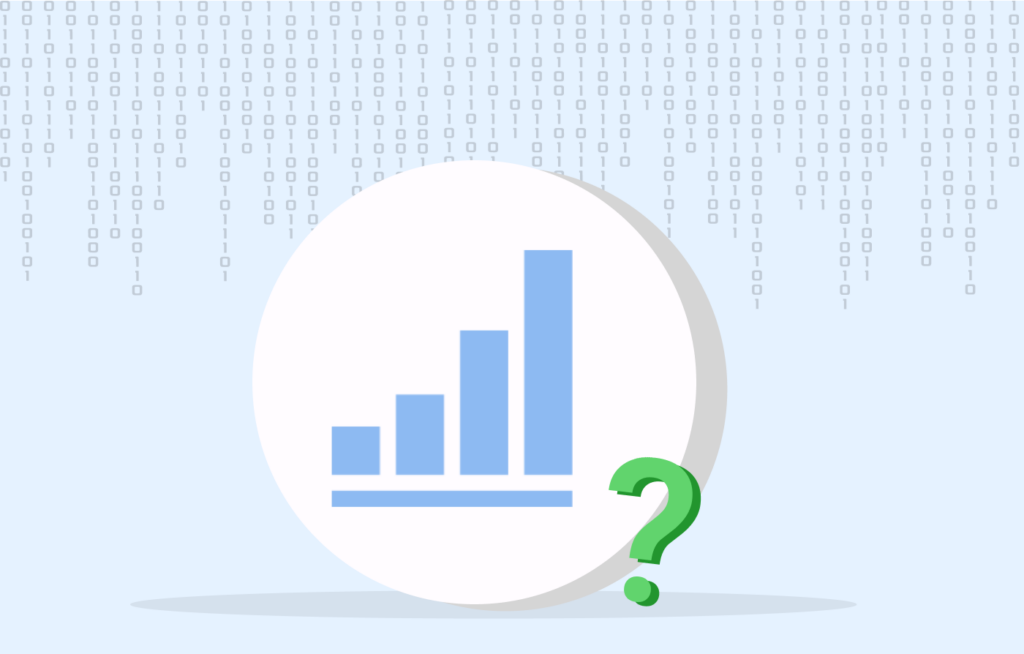
We’ve got the top 10 hacking statistics that’ll stun you. Before we dive into the nitty-gritty details of cyberattacks, let’s take a quick look at these mind-blowing facts:
- Every 39 seconds, a cyberattack strikes somewhere in the digital world.
- Only 5% of a company’s sensitive information is properly secured. The rest is up for grabs!
- Russian hackers are the speediest in the game. They’re like Usain Bolt of the hacking world!
- Ransomware attacks are skyrocketing by a staggering 93% each year. It’s like a digital hostage situation!
- Nearly half (43%) of all hackers have small businesses in their crosshairs. No one is safe!
- Those crafty hackers are churning out 300,000 new malware strains every single day.
- Three out of four cyberattacks start with a sneaky email. Think before you click!
- The US is spending serious cash on cybersecurity—a whopping $14.98 billion budget.
- The dynamic duo of encryption and multi-factor authentication are the biggest thorns on hackers’ sides.
- In 2022, data breaches cost an average of $150 million. And guess what? Healthcare breaches took the crown for the most expensive!
General cybersecurity in statistics

Cybersecurity should be at the top of your mind if you’re using data in any way, shape, or form. We need to talk numbers to truly grasp the mind-boggling impact of cyberattacks on individuals and organizations.
By 2025, the amount of human data floating around in the digital universe will reach a staggering 175 zettabytes. That’s the number “175” followed by a mind-numbing 21 zeros! It’s impossible to imagine the reality of such a number. This includes everything! Cat videos, IT libraries, social media posts, you name it, it’s all there!
The global artificial intelligence (AI) cybersecurity market is also quite serious. In 2022, it was valued at a whopping $17.4 billion, and according to Precedence Research, it’s expected to grow even more to hit $102.78 billion by 2023.
By 2023, there will be around 3.5 million entry-level cybersecurity roles available, as reported by Cybersecurity Ventures. It’s like a gold rush for tech-savvy professionals! But here’s the kicker: 65% of Managed Service Providers admit that their customers struggle to stay compliant with all the cybersecurity regulations, according to Kaseya.
In addition, 70% of companies are facing a serious shortage of security personnel, as revealed by ISSA. It’s like trying to defend a castle with a handful of guards!
In a recent employee survey by Hornet Security, 44% of respondents said their companies aren’t providing any remote training to combat those pesky work-from-home cyber threats.
According to CNBC, tech giants Microsoft and Google have pledged to invest a jaw-dropping $30 billion over the next five years to beef up their cybersecurity systems. Still, as Proofpoint reported, a worrying 65% of directors believe their company is vulnerable to cyberattacks.
Seeking Alpha predicts that cybersecurity expenses could surpass an eye-watering $188 billion in 2023 alone.
Statista reports that 80% of companies have either already adopted or are in the process of implementing the Zero Trust model, which requires users to be authorized and authenticated for ultimate security.
Interestingly, ISC2 found that 55% of cybersecurity professionals actually made the switch from IT to security. It’s like they realized where the real action is! But here’s the catch: According to Issa, too, 93% of development teams and 94% of security teams say that the talent shortage could seriously impact cybersecurity.
The costs of cyberattacks in numbers
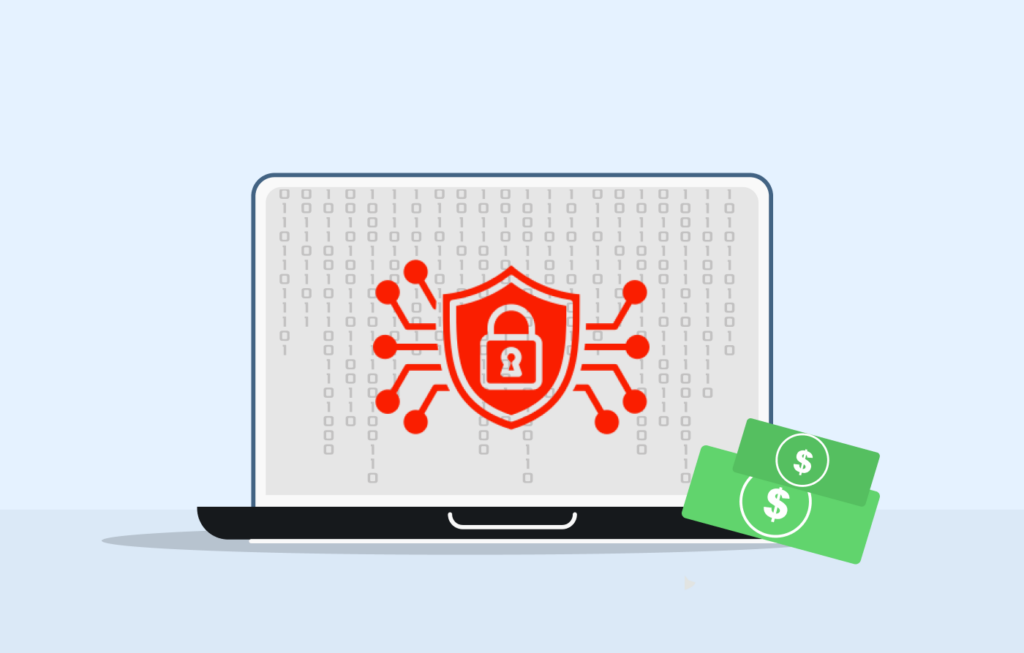
Every year, the price tag for these digital disasters keeps climbing, and once a cyberattack strikes, it can haunt an organization for what feels like an eternity.
When a cyberattack hits, it’s not just the initial blow that hurts. Companies find themselves drowning in a sea of expenses, from criminal investigations and lawsuits to skyrocketing insurance rates. It’s like a financial nightmare that can quickly put a business six feet under.
In the land of the free and the home of the brave, a single cyberattack—a DDoS attack, ransomware, malware, or data breach—can set a company back by a jaw-dropping average of $18,000! And if that wasn’t enough, nearly half (47%) of US organizations are under constant digital siege, facing attacks daily, according to the Hiscox Cyber Readiness Report 2022.
Government corporations aren’t immune to the financial fallout, either. After a cyberattack, they can watch a staggering 8.6% of their net value vanish into thin air, as the Harvard Business Review reported.
As the number of internet users continues to grow, so does the impending doom of cyber threats. By 2027, global spending on cybersecurity could hit a mind-boggling $10 billion, according to Cybersecurity Ventures. In addition, Statista predicts that global cyberattack costs will surge by a whopping 23% over the next five years, reaching an annual total of $23.84 trillion by the end of 2027.
Verizon reports that 86% of cyberattacks are motivated by financial gain, while the rest are fueled by state espionage.
However, the US is fighting back with a cybersecurity budget of $10.83 billion for 2023, according to Statista. But even that might not be enough to stop the bleeding.
Small businesses are feeling the heat, too. Sophos reveals that the average ransom these companies pay hackers is a soul-crushing $170,404.
E-commerce isn’t safe either. Legal Jobs predicts that by 2024, online payment fraud will cost the industry a staggering $24 billion annually.
In a recent Statista survey, 45% of employees confessed that their companies had suffered between one and five successful cyberattacks in the past year alone.
Cybersecurity Ventures estimates that by 2025, organizations will be hemorrhaging $19,977,168 per minute due to hackers, totaling a mind-numbing $10.5 trillion in losses.
51 most essential hacking facts, statistics, and trends
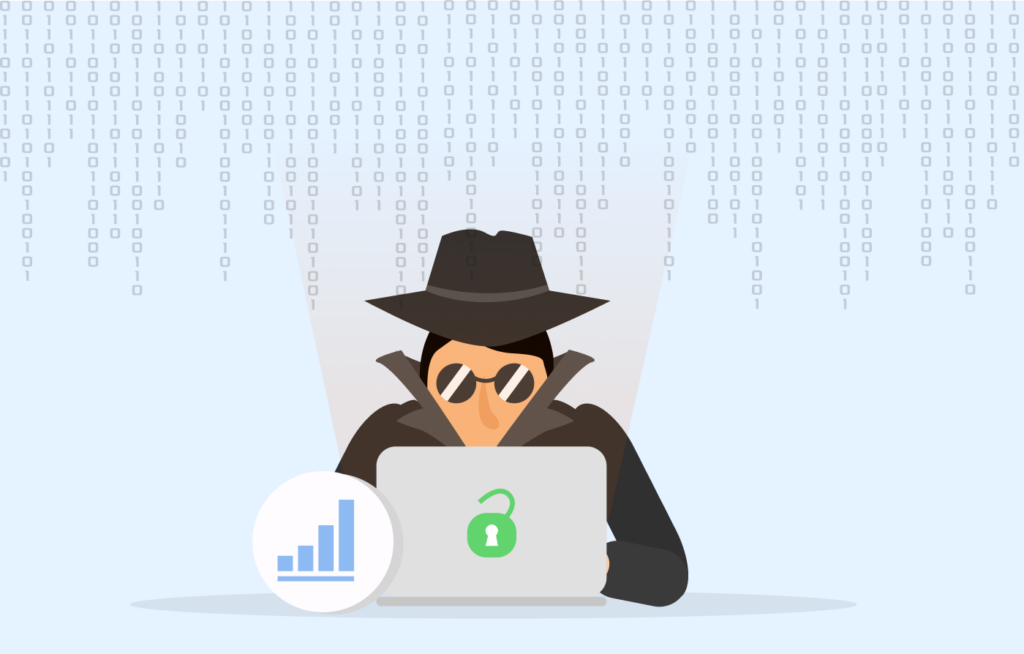
Hackers are getting craftier by the day, dreaming up new ways to snatch your data. But don’t worry. To help you become a data defense master, here are 51 jaw-dropping hacking statistics that’ll assist in enhancing your cyber hygiene.
General statistics on hacking
Cyberattacks are a massive problem, and the statistics are nothing short of alarming. Brace yourself for some eye-opening facts that will make you rethink your online security.
White hat hackers, the good guys of the hacking world, have raked in over $100 million from bounties. Shockingly, nearly 80% of them learned their craft through YouTube videos, online resources, and blogs, while only 6% took formal classes. (HackerOne)
2. Black hat hackers, the villains of the digital realm, have a startling revelation: 73% of them claim that common antivirus security and firewalls are practically useless. 85% of data breaches can be traced back to human error. (Black Hat Ethical Hacking)
3. Every second, hackers steal valuable personal data from unsuspecting internet users. On average, 44 records are swiped every tick of the clock. (Breach Level Index)
4. Cyberattacks are happening at an alarming rate of one every 39 seconds. That’s roughly 2,300 attacks per day! (The University of Maryland)
5. The aftermath of a cyberattack can be devastating for organizations. A staggering 66% of businesses that fell victim to these attacks found the recovery process to be a costly endeavor. (IBM)
6. The United States is taking cybersecurity seriously, allocating $10.89 billion to combat hackers in 2023. The Department of Homeland Security alone will receive nearly $42.6 billion. (Statista)
7. In 2018, cybercriminals raked in around $600 million, while the illegal drug industry’s profits amounted to about $400 billion annually. (The Business Journals)
8. The demand for cybersecurity professionals is skyrocketing. As of July 2023, the United States has over 1.1 million people working in the field, but there are still more than 660,000 unfilled positions. (Cyberseek)
9. The internet is growing astonishingly, with approximately 1 million new users joining the digital world every day. By 2030, internet users are expected to reach a staggering 11 billion. (Statista)
10. Cybercriminals are making a fortune, with some groups like Conti earning between $150 and $180 million in revenue. (Trend Micro)
Facts about data breaches
Breaches are horror stories for any business or human being worried about their digital integrity.
So, what is a data breach, anyway? How does it occur?
We call a data breach any event in which a hacker gains sensitive or confidential information without permission. It’s a sneaky thing, often involving social engineering and other attacks.
These episodes can break an organization or an individual’s life. But you don’t need to believe us. Instead, have a look at the facts.
11. In 2017, Equifax, a primary credit reporting agency, allowed criminals to get away with 147 million credit card numbers and related information. It had to cough up over $500 million to try and fix the damage. (FTC)
12. Healthcare institutions and services are feeling the deleterious effects of hacking more strongly than most other industries. Financial losses in this critical sector skyrocketed by nearly $1 million, reaching a staggering $10 million. (IBM)
13. Marriott International, a household name in the hotel industry, fell victim to a massive data breach in 2018. Hackers made off with the card numbers and expiration dates of over 100 million customers, while an additional 400 million users had their personal information, like passwords and passport numbers, compromised. (The Guardian)
14. In the third quarter of 2022 alone, a mind-boggling 15 million data records were stolen worldwide, with a significant portion coming from social media platforms. (Statista)
15. One of the most alarming aspects of data breaches is how long it takes to detect them. On average, security departments take a whopping 277 days to identify a breach. By then, the hackers likely have already sold the stolen data on the dark web. (IBM)
16. The United States was hit particularly hard in 2022, with over 1,802 cases of data records being lost. The Oklahoma government and MongoDB were among the high-profile victims, losing seven years of FBI records and 854 GB of CVs containing sensitive information about 422 million individuals, respectively. (Statista)
17. Even banks aren’t safe from the clutches of cybercriminals. In 2018, Cosmos Bank in India lost a staggering $13.4 million to hackers who attacked their servers and stole the details of nearly 12,000 Visa cards. To add insult to injury, the hackers made 15,000 transactions to siphon off the funds. (Reuters)
18. The average data breach cost is enough to make any CEO’s head spin. In 2022, organizations spent an average of $4.35 million to recover from data breaches, including expenses related to lost business, post-breach responses, notification, detection, and escalation. (IBM)
19. Perhaps the most shocking statistic is that nearly 40% of data breaches involve internal actors, such as employees, third-party suppliers, and contractors. Half of these breaches are believed to be intentional, while the other half are accidental. (Mcafee’s Grand Theft Data report)
These statistics paint a grim picture of the current state of data security. Organizations and individuals alike need to take serious steps to protect their sensitive information from falling into the wrong hands.
Small businesses in the crosshairs
20. 43% of cyberattacks target small businesses, and 60% of those victims go belly-up within just six months! Yet, only 14% of these businesses have a plan to fight back against hackers. (Small Business Trends)
21. Shockingly, 65% of decision-makers in small businesses believe they’re not at risk, thinking they’re somehow immune to cyberattacks. Hackers love this false sense of security! (Keeper’s 2019 SMB Cyberthreat Study)
22. Over half of US companies have fallen victim to phishing attacks, with fraudulent emails being the weapon of choice in 75% of business attacks. (IT Security Guru, Cyber Security Breaches Survey 2018)
23. Companies are leaving themselves wide open, with only 5% of their files and folders adequately protected. It’s like leaving the front door unlocked and the valuables in plain sight! (Varonis)
24. 46% of hacking victims come from companies with less than 1,000 employees. Hackers prefer to target smaller fish because they often need more robust security measures than larger organizations. (Strong DM)
25. Even big names like Facebook, Twitter, Equifax, and Capital One can be under attack for months before realizing it. It takes companies 212 days to identify a breach and 75 days to contain it. (IBM)
Hacking and the Dark web
26. On the dark web, your social security number might sell for just $1, while a credit card could fetch around $110. (Experian)
27. More than 90% of ATMs are vulnerable to cyber attacks. (PTSSecurity)
28. Personal health information is a hot commodity, valued 40 times more than financial data. Fraudsters use it to create fake IDs and score drugs or medical equipment. (Reuters)
29. For as little as $1, you can buy a hacked Netflix account. It’s a steal compared to the $8.99 monthly subscription fee! (Bitdefender)
30. Feeling adventurous? You can purchase a counterfeit US passport for $6,000 on the dark web and become an instant “citizen.” (The Guardian)
Intriguing facts about hacking and hackers
It’s not all about doom and gloom, fortunately. Now and then, something funny happens in the hacking world.
31. In 2020, a Dutch hacker accessed Trump’s Twitter by guessing his password. The hacker’s tweet? “Please switch on 2FA on all your accounts.” (The Washington Post)
32. Operation Cupcake: In 2011, Al-Qaeda followers hoping to download bomb-making instructions were instead treated to cake recipes from the Ellen Degeneres Show. Sweet! (The Washington Post)
33. The Bitcoin Twitter Scam of 2020 saw a hacker take over high-profile accounts, promising followers to double their money if they sent Bitcoin. If only it were that easy! (BBC News).
Cybersecurity threats and issues: A numbers game
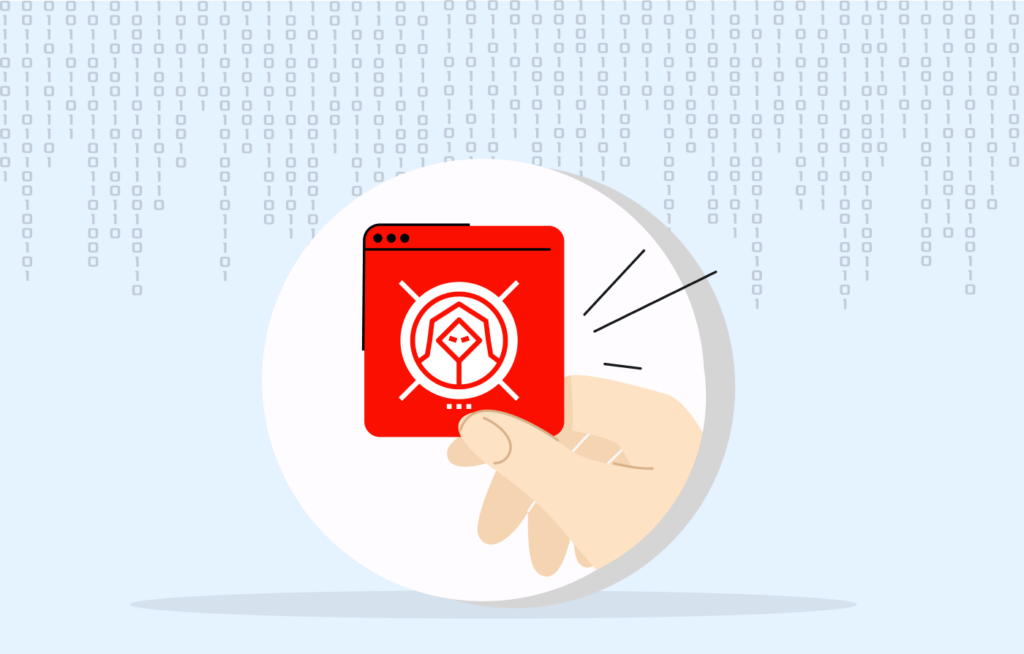
In the digital age, hackers have a whole arsenal of tricks up their sleeves to compromise your information. From malware and social engineering to DDoS attacks, phishing, and ransomware, the threats are as varied as they are dangerous.
34. 54% of phishing emails come with a nasty surprise – either malware or links to infected sites. As phishing tactics become more sophisticated, this number will only rise if people fall for those shady emails. (Statista)
35. In 2022, Cloudflare reported the largest DDoS attack to date, clocking in at a whopping 2.5 Tbps. These attacks accounted for 67% of all cyberattacks, with some hackers demanding a ransom to stop the onslaught. (Cloudflare)
36. Ransomware: The Gift That Keeps on Taking. Ransomware attacks are the bane of existence for organizations across all sectors. Kaspersky Lab noted an increased number of users affected by targeted ransomware in the first ten months of 2022. (Kaspersky Lab)
37. Apple’s App Store: Keeping the Bad Apples Out. Apple’s tight grip on its App Store has helped block over 24,000 malicious apps. With its more open approach, Android has faced more cyberattacks, prompting improved security measures and permissions for third-party apps. (Apple)
38. Cybersecurity: Where the Money Is. Cybersecurity might be your calling if you’re looking for a lucrative career. In North America, the average salary for a cybersecurity professional is a cool $134,800. Europe’s not too far behind at $93,535, while the Middle East, Africa, and Latin America offer a more modest $22,185. (ISC2)
39. Mobile Phones: A Hacker’s Best Friend. Gone are the days of hackers hunched over desktop computers. Today, 60% of fraud originates from mobile phones, with hackers using apps to gain sneaky access to your device and wreak havoc on your mobile banking. (Credit Union Times)
40. Russian Hackers: The Need for Speed. Regarding hacking, Russian cybercriminals are in a league of their own. They can infiltrate a computer network in under 18 minutes, leaving their North Korean (2.5 hours) and Chinese counterparts in the dust. (Statista)
41. The Future of Ransomware. Brace yourself for a bleak prediction: Cyber Security Ventures says that by 2031, businesses will fall victim to a ransomware attack every 2 seconds. Hackers can attack multiple targets in the blink of an eye, making cybercrime a 24/7 operation. (Cyber Security Ventures)
So now you have a glimpse into the scary world of cybersecurity threats! Remember, staying informed is half the battle. The other half? Protect yourself and your data from falling into the wrong hands. Stay safe out there!
COVID-19 and cybersecurity
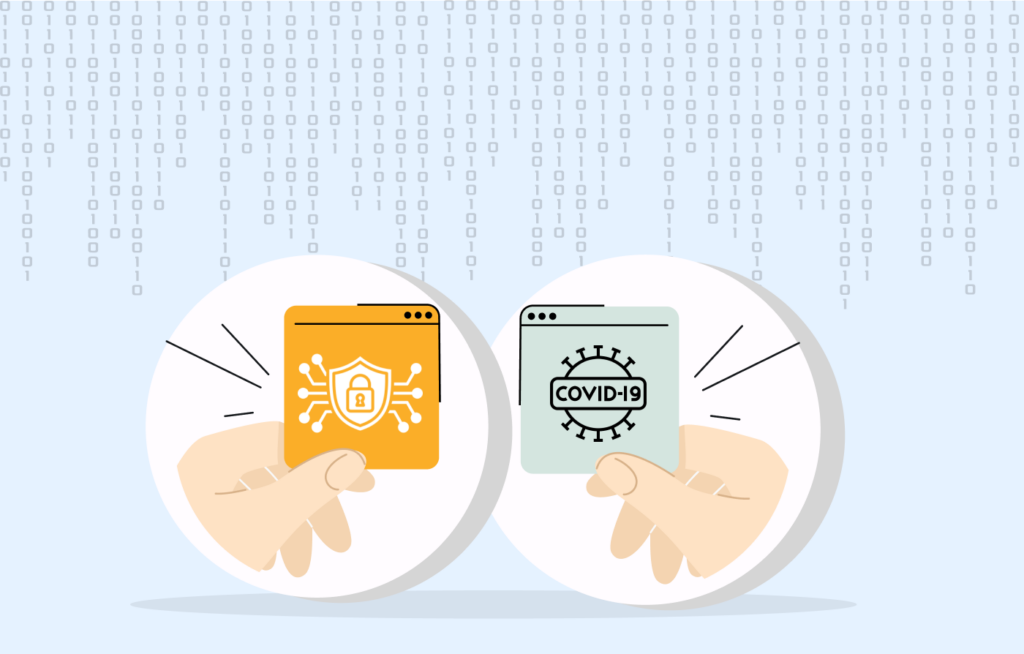
Here are some eye-opening statistics about the impact of the COVID-19 apocalypse on cybersecurity:
42. During the height of the pandemic, spam reigned supreme as the threat exploiting COVID-19 fears, with a staggering 65.7% of all COVID-19 menaces being spam emails. (ENISA, 2020)
43. The pandemic has left 44% of grown-ups feeling exposed to digital criminals than before the world turned upside down. (Norton, 2021)
44. In the past year, about 20% of users suffered a scam of several kinds from buying fake vaccines to paying a fee for the relief money. (Norton, 2021)
45. About 25% of workers noticed an uptick in fraudulent emails. (Deloitte, 2021)
46. Nearly two in five did something about their digital safety due to lifestyle changes brought on by the COVID-19 pandemic. (Norton, 2021)
47. Since the start of the pandemic, the FBI has reported a jaw-dropping threefold increase in cyberattacks. (The Hill, 2020)
48. Banks Under Siege. The COVID-19 pandemic seems to be behind a 238% surge in cyberattacks targeting banks. (Carbon Black, 2020)
The above stats show how badly the COVID-19 pandemic affected the internet world. However, it has become crucial now to work on your cyber hygiene and learn how to reduce the risk of these kinds of cyberattacks.
Hacking and Bitcoin
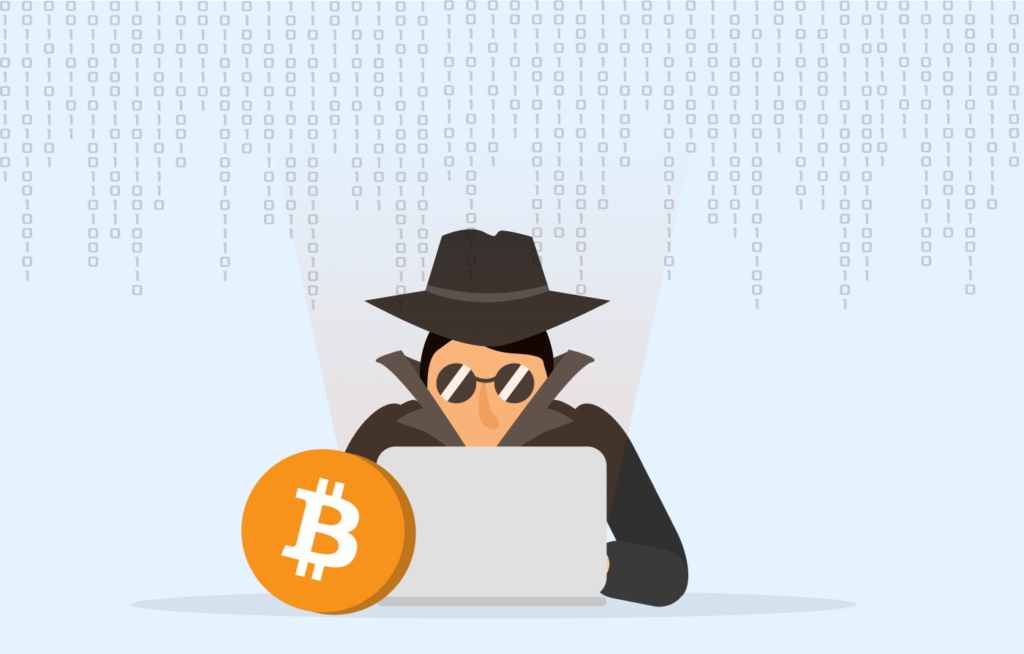
Bitcoin has a questionable reputation because it’s so often linked with criminal activities. Let’s see how:
49. No fewer than $76 billion of illegal activity per year involves Bitcoin, highlighting the cryptocurrency’s popularity among cybercriminals. (SSRN, 2018)
50. Regarding ransomware payments in which criminals encrypt the user’s data and ask for a ransom to decrypt it, Bitcoin reigns supreme, accounting for 98% of all cryptocurrency transactions in this nefarious category. (Coveware, 2019)
51. Crypto criminals stole $1.9 billion in 2020, down from $4.5 billion in 2019. (Finaria, 2021)
The world continues to accept digital currencies as they play an essential role in this age. However, many people are still here to exploit it by stealing your crypto wallet credentials, injecting malware for crypto-jacking techniques, and many other methods. Therefore, everyone must take steps to enhance their online security.
Who is behind the data breaches?
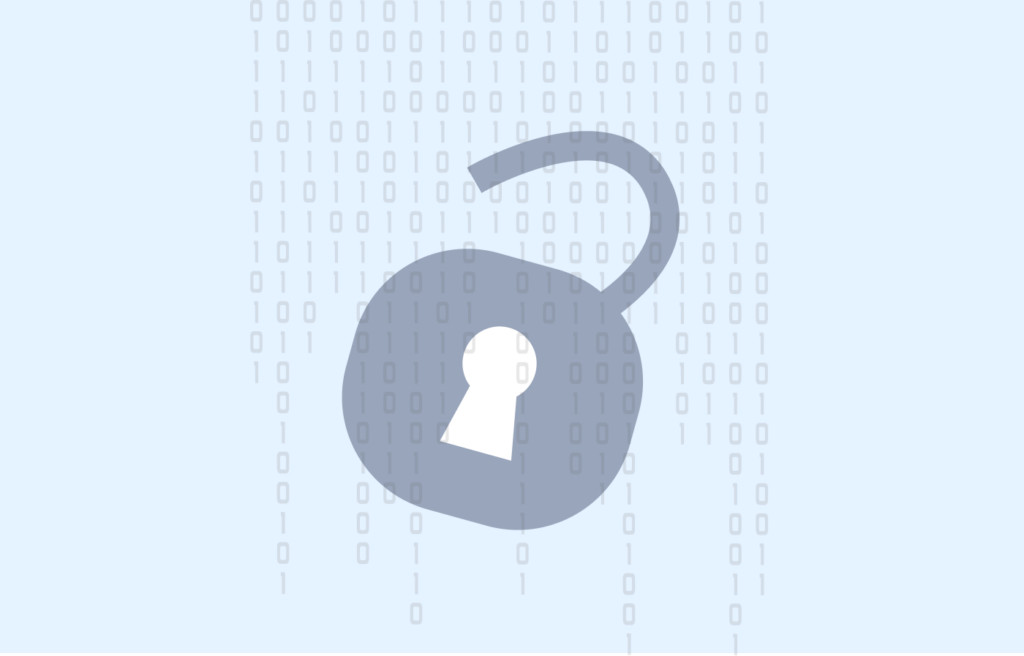
According to the statistics, about 70% of the breaches happen because of outsiders; criminal groups are responsible for only 55% of the breaches. In addition, other criminals like internal bad actors, employees, etc., conduct 30% of the total data breaches.
Groups of hackers containing four or over members contribute 4% to this. Other breaches like partners, vendors, constitute of 1% of the total data breaches.
Protecting your business from cyberattacks: 6 essential steps
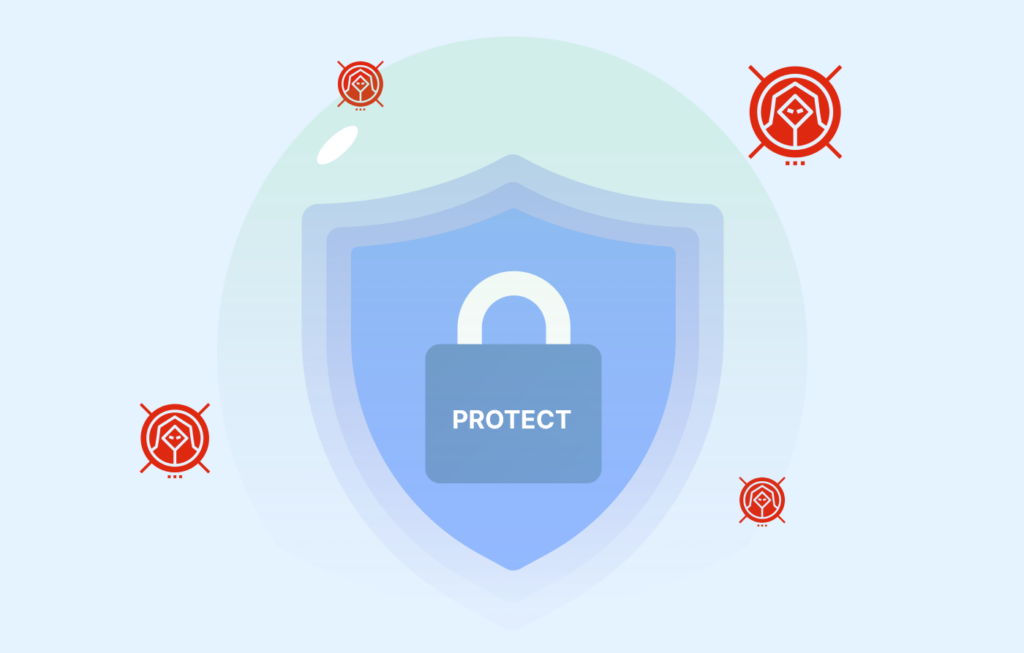
The threat of hackers compromising your data is more real than ever. To safeguard your business and minimize the risk of a data breach, implementing robust security measures is not just responsible—it’s essential. While having professional data breach insurance is crucial, you can take several other steps to enhance your defenses.
So, let’s learn how to reduce your risk of falling victim to a cyber attack:
1. Minimize data transfers
With more employees working remotely, transferring data between business and personal devices has become increasingly common, which significantly increases your cyberattack vulnerability. Be mindful of where your data resides and limit transfers whenever possible.
2. Download with caution
Be cautious when downloading files, especially from unverified sources. Malware often lurks in seemingly innocent downloads, waiting to infiltrate your systems and devices, resulting in a cyberattack. Stick to trusted sources and avoid unnecessary downloads to minimize your exposure.
3. Strengthen password security
Your passwords are the first line of defense against a wide range of attacks – use complex, meaningful strings of symbols, change your passwords regularly, and never write them down or share them with anyone. A strong password policy is a critical component of protecting your sensitive data.
4. Keep software up to date
Regularly installing the latest updates will make your devices less vulnerable to attacks. Don’t ignore those update notifications—they’re there for a reason!
5. Stay vigilant for data leaks
Regularly monitoring your data and identifying existing leaks can help mitigate the potential fallout from long-term data leakage. Use data breach monitoring tools to monitor and alert you of suspicious activity. The sooner you detect a leak, the better equipped you’ll be to respond.
6. Create a breach response plan
It’s crucial to establish a formal plan to manage potential incidents, as these protocols will help organizations of any size respond to actual attacks, minimizing their potential damage.
The threat of cybercrime is constant, and businesses must remain proactive in defending their data. Don’t wait until it’s too late—take action today to prevent future data breaches and the devastating consequences that can follow.
FAQs
In 2021, the United States had almost 2000 cyberattacks, highlighting the growing threat of cyber incidents and the need for robust security measures.
Nobody knows for sure but, given the available data, about 800,000 humans could be falling victim to hackers every year.
Some reports indicate that the amount of breaches isn’t necessarily increasing. However, the cost of these incidents, specifically for businesses, is rising.
According to reports, China and Turkey are most often identified as the primary sources of cyberattacks. However, it’s crucial to recognize that threats can originate from anywhere worldwide.
